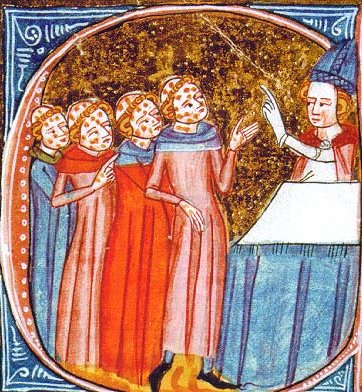AVOIDING THE PLAGUE
Medieval people believed in a variety of different causes of disease. We can group many together and call them magical or supernatural. Others were physical.
The Church taught that God could send disease as a punishment for human sins.
There were doctors (very expensive), monks from the local monastery, apothecaries (people who sold herbs and drugs) and local wise men and women.
The Plague was accelerated by a total absence of sanitary measures and lack of knowledge. The dead were heaped in piles, rats and dogs fed on the corpses. Homes were not fit for humans. Roofs and walls were made of straw; floors were dirt; animals were kept inside. The streets of cities were covered with mud, garbage, and excrement.In warmer months and in southern Europe, at this time, there was at least one family of black rats per household and an estimated average of three fleas per rat.
Unaware of the cause of the disease people feared the spreading contagion and made efforts to avoid the Plague in different ways:
1. burning incense
2. dipping handkerchiefs in aromatic oils
3. ringing church bells and firing cannons
4. wearing talismans
5. bathing in human urine
6. putting dead animals in their homes
7. bleeding and bloodletting
8. drinking the pus extracted from a suppurated bubo
9. drinking liquid gold or powdered emeralds
10. joining groups of flagellants.
